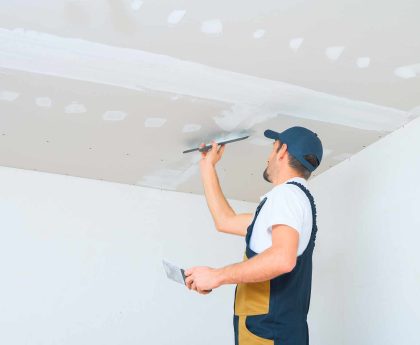In today’s competitive market, product packaging plays a crucial role in attracting customers and ensuring the safety and integrity of the contents. Die-cut mylar bags have emerged as a versatile packaging solution, offering a blend of durability, customization, and visual appeal. Let’s delve into the world of die cut mylar bags to understand their significance across various industries.
Advantages of Die Cut Mylar Bags
Die-cut mylar bags are crafted from high-quality mylar material, renowned for its durability and tear resistance. Unlike traditional packaging options, mylar bags provide superior protection against moisture, oxygen, and light, preserving the freshness and quality of the packaged goods. Additionally, their ability to withstand punctures and tears makes them ideal for storing delicate or sharp-edged products.
One of the key advantages of die-cut mylar bags lies in their customizable nature. Manufacturers can tailor the shape, size, and design of these bags to meet specific product requirements. Whether it’s a unique silhouette or intricate branding elements, die-cut mylar bags offer limitless possibilities for creative packaging solutions.
Common Uses of Die Cut Mylar Bags
Die-cut mylar bags find widespread applications across various industries, owing to their versatility and effectiveness. In the food industry, these bags are extensively used for packaging snacks, coffee, spices, and other perishable items. The barrier properties of mylar material help in extending the shelf life of food products and maintaining their flavor and aroma.
In the electronics industry, die-cut mylar bags serve as protective enclosures for sensitive components, such as circuit boards, cables, and electronic gadgets. The anti-static properties of mylar material safeguard electronic devices against static electricity and moisture, preventing damage during storage and transit.
If you want to know more information about peanut butter breath strain packaging visit TopUSAPackaging
Factors to Consider When Choosing Die Cut Mylar Bags
Selecting the right die-cut mylar bags involves evaluating various factors to ensure optimal performance and cost-effectiveness. Firstly, it’s essential to assess the quality of the mylar material, considering factors such as thickness, barrier properties, and puncture resistance.
Additionally, businesses need to determine the appropriate size and shape of the bags based on the dimensions and quantity of the packaged items. Whether it’s a standard pouch or a custom-shaped container, the packaging should provide a snug fit and adequate protection to the contents.
How to Design Die Cut Mylar Bags
Designing die-cut mylar bags requires a strategic approach to ensure alignment with brand identity and consumer preferences. Begin by defining the brand’s aesthetic vision and core values, considering factors such as color scheme, typography, and imagery.
Utilize graphic design software to create mockups and prototypes of the packaging design, experimenting with different layouts and visual elements. Incorporate brand logos, product images, and promotional messages in a cohesive manner, ensuring readability and visual impact.
Cost Considerations for Die Cut Mylar Bags
While die-cut mylar bags offer numerous benefits, businesses must also consider the cost implications associated with their production and usage. The initial investment in custom die-cutting tools and printing setup may seem daunting, but it’s essential to weigh the long-term benefits against the upfront expenses.
Environmental Impact of Die Cut Mylar Bags
While die-cut mylar bags offer exceptional performance and aesthetic appeal, concerns regarding their environmental impact have prompted industry stakeholders to explore sustainable alternatives. Mylar material, derived from polyester film, is not biodegradable and poses challenges in terms of disposal and recycling.
Conclusion
In conclusion, die-cut mylar bags represent a versatile and effective packaging solution that caters to the diverse needs of modern industries. From food packaging to electronics and pharmaceuticals, these bags offer a blend of durability, customization, and visual appeal, enhancing product presentation and protection. While the environmental impact remains a concern, ongoing efforts to explore sustainable materials and recycling initiatives signal a positive shift towards eco-friendly packaging solutions.
FAQs (Frequently Asked Questions)
-
Are die-cut mylar bags suitable for storing perishable food items?
- Yes, die-cut mylar bags offer excellent barrier properties that help in preserving the freshness and quality of perishable food items, extending their shelf life.
-
Can die-cut mylar bags be customized with unique shapes and designs?
- Absolutely, one of the key advantages of die-cut mylar bags is their customizable nature. Manufacturers can create bespoke shapes and designs to align with brand identity and product specifications.
-
Are die-cut mylar bags recyclable?
- While traditional mylar material is not biodegradable, efforts are underway to explore recyclable and eco-friendly alternatives for die-cut mylar bags. It’s essential to check with manufacturers for specific recycling guidelines and options.
-
What factors should businesses consider when choosing die-cut mylar bags for packaging?
- Businesses should consider factors such as material quality, size and shape requirements, printing options, and cost efficiency when selecting die-cut mylar bags for packaging purposes.
-
How can I ensure proper storage and handling of die-cut mylar bags?
- To maintain the integrity of die-cut mylar bags, it’s essential to store them in a clean, dry environment away from direct sunlight and moisture. Handle the bags with care to avoid punctures or tears, ensuring optimal protection for the packaged contents.





